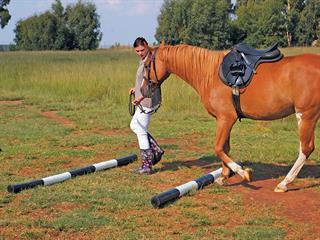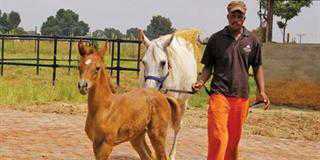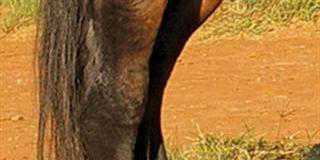
I often get emails along the lines of the following:
How much work can my horse do? How do I get my young horse working? My horse has been off work after an injury – how do I bring it back into work?
Let’s start with the basics. In the wild, horses move most of the day and a good part of the evening. The average wild horse that is free to roam covers about 30km/day. By contrast, our horses are stabled for most of their lives. This means that they need additional exercise to prevent them from gaining unnecessary weight and becoming stiff and bored.
The horse’s circulation will slow down and eventually the toxins in its body will start to accumulate. In fact, it’s dangerous for a horse to have to stand in a stable for even a few days. The only time this is acceptable is if the horse is ill or has an injury that requires it to be kept quiet, and you have consulted a vet.
If the cause is illness, it’s important to take the horse out on a lead to grass a little, or just to walk a short distance.
Be sure to remove all concentrates as these put the body under unnecessary stress. Feed it only good-quality hay. Your horse should never be without roughage unless your vet has advised otherwise.
Always risky
If a horse stands for a period, its fat percentage starts to drop, making it more prone to feeling the cold, and its muscles start to atrophy. This means that bringing a horse back into work after illness or injury is always a risky business.
It’s essential to decide what you’ll be expecting the horse to do. Then assess the animal by asking:
- Is the horse suitable for the job?
- How unfit is it?
- How much time do you have?
- Is the horse in good health? That is, not too over- or under-weight, or ill?
Remember that when you start increasing a horse’s workload, you need to increase its energy intake through concentrates (hard feed).
Getting started
Fitness is the ability to carry out strenuous work and to recover from the effort with relative ease – and be ready for more work. Start with a daily 20-minute walk in hand for six days. Then allow the horse one day off. The following week, saddle up and walk for 20 minutes for six days. Every day, after exercise, check the legs for heat or swelling.
In week three, increase the walk time to 30 minutes. Thereafter increase the time weekly in 10-minute increments until you’re walking for an hour.
Next, increase the workload by including two-minute bursts of trot. After three months you should be doing 10 bursts of trot. This is the best way to start any horse. Within three months it’s fit enough to do canter work.
I encourage riders to always check all four legs before and after work. If you know the lumps or bumps and heat in your horse’s legs, it will be easy for you to spot a problem.
If there’s a change in the legs when you’re bringing the horse back into work, such as heat, cut back on the workload until the legs are cold after work.
Legs and pulse are all indicators of pain levels, and it’s particularly important not to work a lame horse.
If you have any doubts whatsoever, please consult a vet or professional trainer.
Kim Dyson breeds Arabians and Lusitanos, and has 22 years’ experience in holistic equine and human body work.













